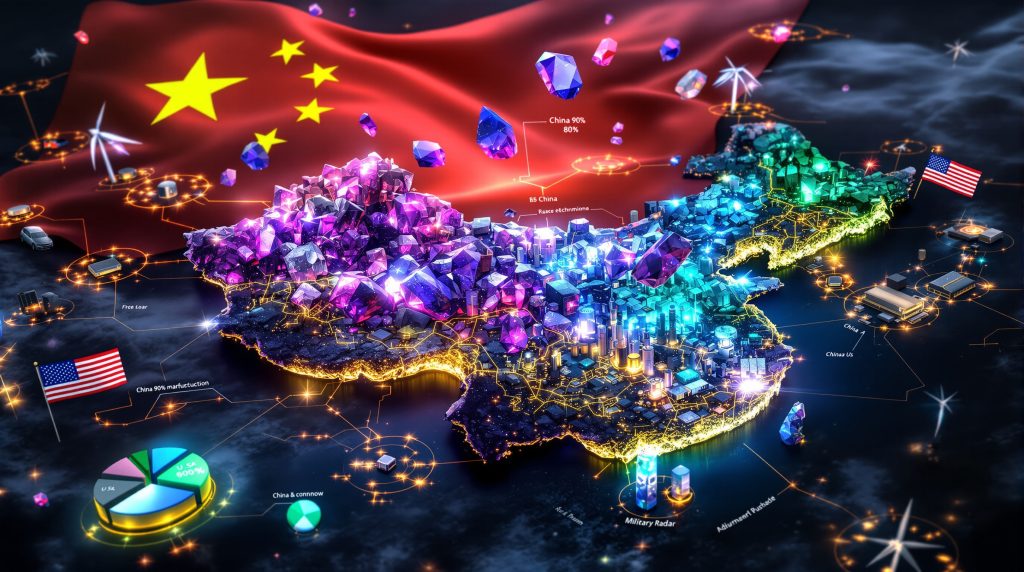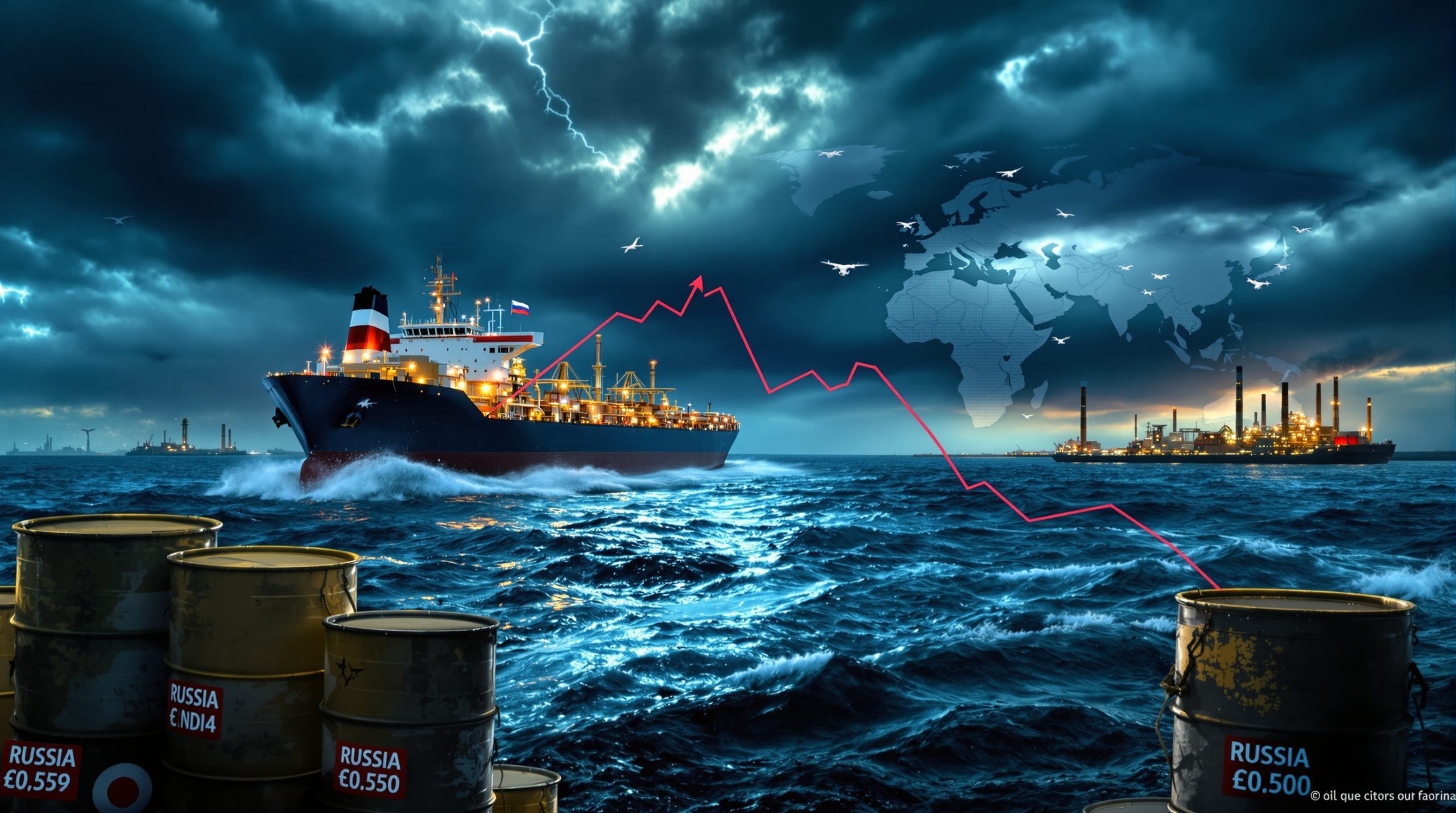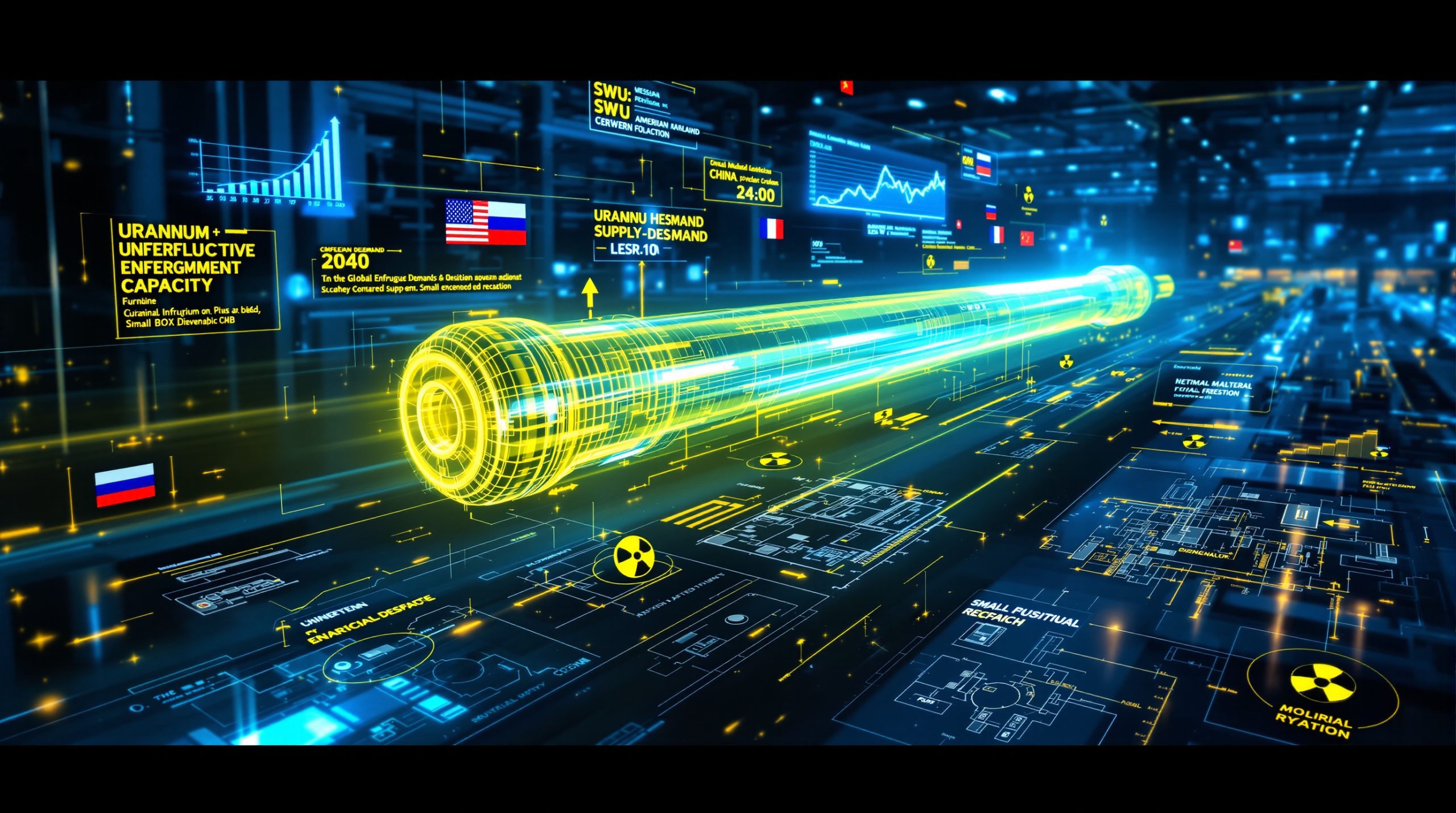China's Rare Earth Export Controls: Strategic Implications for Global Supply Chains
Understanding the 2025 Export Control Framework
China has implemented a comprehensive framework for controlling rare earth exports, set to take full effect on December 1, 2025. This regulatory system represents one of the most significant shifts in global mining landscape in recent years, with far-reaching implications for technology industries worldwide.
The new controls establish strict licensing requirements for any foreign companies utilizing products containing more than 0.1% of Chinese-sourced rare earth elements. This incredibly low threshold effectively captures most high-tech manufacturing processes globally, given China's dominant position in the rare earth supply chain.
Perhaps most concerning to international manufacturers is the Foreign Direct Product Rule (FDPR) component, which extends controls to products manufactured using Chinese rare earth production technology—even if the materials themselves weren't sourced from China. This "long-arm jurisdiction" approach mirrors similar U.S. policies in the semiconductor sector.
The comprehensive framework covers the entire rare earth value chain—from raw materials to processing technologies and finished products—creating a multi-layered control mechanism that few global manufacturers can easily circumvent.
Key Elements Under Control
The controls specifically target all 17 rare earth elements, with particular emphasis on those most critical minerals energy applications. Neodymium, essential for powerful permanent magnets used in electric vehicles and wind turbines, faces especially tight restrictions. Similarly, dysprosium and terbium, which enhance magnet performance at high temperatures, are subject to stringent export licensing.
Beyond raw materials, China has extended controls to processing technologies that have been its closely guarded competitive advantage. These include specialized separation and purification techniques developed over decades, which few other countries have successfully replicated at industrial scale.
Manufacturing techniques for rare earth permanent magnets—where China holds approximately 90% of global production capacity—are now considered protected technologies under the new framework.
| Application Type | Controlled Status | Strategic Significance |
|---|---|---|
| Defense systems | Highly controlled | Critical for guidance systems, radar |
| Electric vehicles | Highly controlled | Essential for high-efficiency motors |
| Wind turbines | Controlled | Required for generator magnets |
| Consumer electronics | Moderately controlled | Used in speakers, vibration motors |
| Catalytic converters | Minimally controlled | Less strategic application |
Why Is China Implementing These Export Controls Now?
Geopolitical Context Behind the Decision
The timing of China's rare earth export controls directly correlates with escalating tensions in the U.S.-China technology competition. Analysis from multiple sources indicates the October 10, 2025 announcement was a calculated response to the U.S. Department of Commerce's expansion of its Entity List, which placed additional Chinese technology companies under strict sanctions.
This move followed what Beijing perceived as a breakdown of agreements reached during the Madrid negotiations in September 2025. During those talks, both sides had reportedly reached a "tacit consensus" on technology trade issues that China believed was subsequently violated by U.S. actions.
Chinese officials have framed the export controls as a legitimate assertion of sovereign rights over critical mineral resources—positioning them as defensive rather than aggressive measures. This narrative aims to establish legal and diplomatic legitimacy for the restrictions under international trade frameworks.
The controls also serve as a strategic counter to the extensive U.S. semiconductor export restrictions imposed over the past three years, establishing rare earths as China's "silicon chips" in the ongoing technology competition.
Financial analysts note these controls represent one of several "punitive measures employed or threatened by the world's two largest economies as they attempt to gain the upper hand in their broader rivalry," creating a concerning pattern of escalation in the technology sphere.
China's Rare Earth Market Dominance
China's commanding position in the global rare earth market has evolved systematically since the 1990s, when the country first recognized these elements' strategic value. Today, China controls over 90% of global processed rare earths, creating an unprecedented level of supply concentration for materials critical to modern technology.
While China holds approximately 37% of global rare earth deposits, its dominance stems from massive investments in processing capacity. The country has systematically developed expertise across the entire value chain—from mining and separation to magnet manufacturing and end-use applications.
This market position didn't happen by accident. Beginning in the late 1980s, China designated rare earths a strategic resource and implemented policies to develop domestic capabilities while encouraging foreign manufacturers to relocate production to China to access these materials.
The strategic value of this position cannot be overstated. Rare earth elements, despite their relatively small market size (approximately $5-8 billion annually), are essential inputs for industries worth trillions of dollars. This creates asymmetric leverage where the controller of a small but critical resource can influence much larger economic sectors.
How Will These Controls Impact Global Supply Chains?
Critical Industries Affected
The defense sector faces particularly acute challenges from these export controls. Modern military systems rely extensively on rare earth materials—neodymium magnets for missile guidance systems, terbium in sonar technologies, and samarium-cobalt magnets in radar applications. Defense critical materials strategy now requires contractors to verify their supply chains aren't using Chinese-sourced materials or technologies.
Electric vehicle manufacturers may experience the most immediate disruption. A typical EV contains 1-2 kilograms of rare earth elements in its motor magnets, with premium performance models using significantly more. Major automakers including Tesla, Volkswagen, and Toyota now face potential production constraints if they cannot secure alternative supplies.
The renewable energy sector, particularly wind turbine manufacturers, confronts similar challenges. Each large offshore wind turbine requires up to 600 kilograms of rare earth materials in its permanent magnet generators. This dependency creates significant vulnerability for clean energy transition goals in Europe and North America.
Consumer electronics producers, already dealing with semiconductor shortages, now face additional supply chain complications. While each device contains small amounts of rare earths, the massive production volumes mean even minor disruptions can impact millions of units.
| Industry | Exposure Level | Impact Timeframe | Potential Price Effects |
|---|---|---|---|
| Defense | Critical | Immediate-6 months | 30-50% component cost increase |
| Electric vehicles | Severe | 3-9 months | 5-15% battery system cost increase |
| Wind power | High | 6-12 months | 10-20% generator cost increase |
| Consumer electronics | Moderate | 3-6 months | 2-8% finished product cost increase |
| Medical imaging | Moderate | 6-12 months | 5-10% equipment cost increase |
Economic Ripple Effects
Price volatility in rare earth markets has already begun, with some elements seeing 15-30% increases within days of the announcement. Analysts project potential price spikes of 200-300% for critical elements like neodymium and dysprosium if full restrictions are implemented—similar to the 2010-2011 rare earth crisis when China briefly restricted exports.
Manufacturing costs for high-tech products will increase substantially, with magnet producers likely facing the most immediate impact. These increased input costs will cascade through supply chains, potentially adding 5-10% to finished product costs for technologies heavily dependent on rare earth magnets.
Supply chain reconfiguration presents enormous challenges, with realistic timelines measured in years rather than months. Alternative suppliers outside China currently lack capacity to meet global demand, while developing new capacity requires billions in investment and 3-5 years for construction and certification of processing facilities.
The broader economic impact includes potential inflation in technology sectors, with consumer electronics, electric vehicles, and renewable energy technologies facing increased costs that will likely be passed to consumers. This could slow adoption rates for technologies critical to climate goals and digital transformation.
What Are the Strategic Implications for International Relations?
U.S.-China Technology Competition
The rare earth export controls represent a significant escalation in the ongoing technology competition between the United States and China. They mirror similar U.S. semiconductor export restrictions but target a domain where China holds a commanding market position.
This move creates a concerning symmetry in the technology decoupling process. While the U.S. has leveraged its semiconductor design and manufacturing advantages, China is now deploying its rare earth dominance as a counterbalance, creating parallel tracks of technological separation.
Military technology development faces particular challenges from this bifurcation. Defense systems in both countries rely on components from the other's area of dominance—creating complex security implications and forcing accelerated development of domestic alternatives.
The rare earth restrictions provide China with considerable negotiating leverage in ongoing discussions about semiconductor access. This may lead to proposals for mutual relaxation of controls or more complex technology exchange arrangements that acknowledge each side's strategic advantages.
Global Response Options
Countries vulnerable to rare earth supply disruptions are pursuing multiple response strategies. Japan, following its 2010 experience with Chinese rare earth restrictions, has developed the world's most advanced rare earth recycling infrastructure and strategic stockpiles estimated at 5-10 years of critical material consumption.
The European Union has accelerated implementation of its Critical Raw Materials Act, which aims to secure access to 30 strategic minerals including rare earths. The legislation includes ambitious targets for domestic sourcing (10%), recycling (25%), and diversification of imports so no country provides more than 65% of any critical material.
International cooperation frameworks are emerging, with the U.S.-led Minerals Security Partnership (MSP) now including 14 countries focused on developing alternative supply chains. These efforts involve coordinated investment, technical knowledge sharing, and streamlined permitting for critical mineral projects.
Trade agreement restructuring is also underway, with emerging proposals to include critical mineral access guarantees in bilateral and multilateral trade deals. These would establish legal frameworks for supply security beyond traditional market mechanisms.
How Are Countries Developing Alternative Supply Chains?
Emerging Rare Earth Projects Outside China
Australia has emerged as the leader in non-Chinese rare earth development. Lynas Rare Earths operates the world's largest non-Chinese rare earth processing facility, with plans to double capacity by 2027. The Australia strategic reserve initiative has fast-tracked permits and provided financial backing for new projects.
North American mining trends show rapidly expanding processing capacity, though from a small base. MP Materials is redeveloping the Mountain Pass mine in California to include separation and processing capabilities by 2026. Meanwhile, the Canadian government has identified 21 rare earth projects for accelerated development, with projected investments exceeding $5 billion over five years.
The European Union faces more significant challenges due to limited domestic rare earth deposits. Its strategic autonomy initiative focuses on securing processing capacity and developing partnerships with resource-rich countries like Australia, Canada, and select African nations under fair-trade principles.
African rare earth exploration has accelerated dramatically, with significant projects under development in South Africa, Namibia, and Tanzania. These projects typically involve partnerships with Western or Japanese companies rather than Chinese firms, reflecting the geopolitical dimension of rare earth development.
Technical Challenges to Supply Chain Diversification
Environmental considerations present major hurdles for rare earth processing expansion. The separation process traditionally generates significant amounts of acidic wastewater and radioactive byproducts (from thorium and uranium naturally occurring alongside rare earth deposits). Developing environmentally responsible processing requires additional investments that China historically avoided.
The timeline for developing competitive processing capacity outside China remains daunting. Most industry analysts project 3-5 years for meaningful capacity additions, with full supply chain independence requiring 7-10 years of consistent investment and development.
Cost comparisons between Chinese and non-Chinese sources highlight the economic challenge. Processing rare earths outside China currently costs approximately 20-40% more due to stricter environmental standards, higher labour costs, and the lack of integrated supply chain ecosystems that China has developed over decades.
Technological barriers further complicate diversification efforts. China has developed proprietary processing techniques protected as trade secrets or through patents. Countries developing alternative capacity must either license these technologies (if available) or invest in developing new approaches—adding time and cost to an already challenging process.
What Does This Mean for Technology Companies?
Corporate Risk Mitigation Strategies
Supply chain diversification has become a top priority for rare earth-dependent manufacturers. Companies like Volkswagen have announced plans to source 40% of their magnetic materials from non-Chinese suppliers by 2027, though achieving this target requires significant investment in supplier development.
Material substitution research has accelerated dramatically. Toyota recently announced a breakthrough in developing motors that use 50% less neodymium, while other manufacturers are exploring entirely different motor designs that eliminate rare earth dependency at some performance cost.
Inventory management strategies have shifted toward larger buffer stocks of critical materials. Electronics manufacturers have increased rare earth magnet inventories from typical 2-3 month supplies to 6-12 month reserves where financially feasible, accepting higher carrying costs to reduce supply disruption risks.
Product redesign initiatives are underway across multiple industries, with companies evaluating the tradeoffs between performance optimization and supply chain security. In many cases, slight reductions in efficiency or performance are being accepted to reduce dependency on the most supply-constrained elements.
Case Study: EV Industry Adaptation
Major electric vehicle manufacturers have implemented diverse response strategies to rare earth supply challenges. Tesla has pursued a dual-track approach—securing long-term supply agreements with non-Chinese producers while simultaneously developing motor designs that use fewer rare earth materials.
Implementation timelines vary significantly by manufacturer. Chinese EV producers like BYD have the least exposure to export controls, while European and American manufacturers face more significant adaptation challenges, with most projecting 2-3 years to achieve substantial supply chain diversification.
Cost implications for vehicle production depend heavily on design choices. For manufacturers maintaining current rare earth-intensive designs, component costs may increase 5-15% in the short term. Those transitioning to alternative technologies face higher upfront R&D and retooling costs but potentially lower long-term material costs.
Consumer impact assessments indicate these changes will likely add $500-1,500 to EV prices in the near term, potentially slowing adoption rates in price-sensitive markets. However, the long-term effect may accelerate innovation toward more resource-efficient designs with broader supply options.
How Might Rare Earth Politics Evolve?
Future Scenarios for Global Rare Earth Supply
The potential for further export restrictions remains significant, with Chinese officials signaling the current framework could be tightened if technology tensions escalate. This could include lowering the 0.1% threshold, expanding FDPR provisions, or implementing quota systems similar to those used in previous rare earth disputes.
Retaliatory measures from affected countries are already being discussed, particularly in the United States where the Commerce Department is evaluating restrictions on technologies critical to Chinese manufacturing processes. This creates risk of a widening technology trade conflict affecting multiple strategic sectors.
International governance frameworks for critical minerals have gained momentum, with proposals for a "Critical Minerals Treaty" that would establish principles for responsible resource nationalism, environmental standards, and supply security. However, China's participation in such frameworks remains uncertain.
Long-term market restructuring appears inevitable, with most analysts projecting a less concentrated but more regionalized rare earth supply chain within a decade. This would likely feature stronger integration between friendly nations while maintaining separate supply ecosystems for competing technology blocs.
Strategic Minerals as Geopolitical Leverage
Historical precedents demonstrate both the power and limitations of resource-based geopolitical leverage. The 1970s OPEC oil embargoes initially created severe disruptions but ultimately accelerated development of alternative energy sources and strategic petroleum reserves. Similarly, China's 2010 rare earth restrictions against Japan prompted significant investment in alternatives and recycling.
Compared to other critical mineral supply chains, rare earths present unique leverage points due to their processing complexity and China's dominant market position. Other materials like cobalt (Congo), lithium (Australia/Chile), and nickel (Indonesia/Philippines) feature more diverse supplier landscapes, though concentration remains a concern.
Bargaining power dynamics in resource diplomacy suggest China may ultimately prefer controlled access to rare earths rather than complete restriction, using graduated export controls as negotiating leverage in broader technology discussions rather than as absolute barriers.
International cooperation shows signs of gaining traction against competitive approaches, with Japan's model of combining strategic stockpiles, recycling initiatives, and international supplier development offering a template for reducing vulnerability without escalating conflicts.
FAQ: Understanding Rare Earth Export Controls
What exactly are rare earth elements and why are they important?
Rare earth elements comprise a group of 17 metallic elements including the 15 lanthanides plus scandium and yttrium. Despite their name, most rare earths are relatively abundant in the Earth's crust—comparable to common industrial metals like copper and zinc. Their "rarity" stems from their dispersed distribution and the complex processing required to separate them.
These elements possess unique properties—particularly in magnetism, luminescence, and electrochemistry—that make them irreplaceable in many high-technology applications. Neodymium creates the world's strongest permanent magnets, essential for miniaturizing electric motors and generators. Europium provides red color in LED screens and displays. Cerium is critical for catalytic converters in vehicles.
The strategic importance of rare earths extends beyond civilian technology to national security applications. Military systems rely heavily on these materials for precision guidance, night vision technology, communications equipment, and radar systems. Countries without secure access face potential vulnerabilities in defense capabilities.
The clean energy transition has dramatically increased rare earth demand, particularly for wind turbines and electric vehicles. A single 3-megawatt wind turbine can contain up to 600 kilograms of rare earth elements, while electric vehicle motors typically require 1-2 kilograms per vehicle.
How dependent is the world on Chinese rare earth supplies?
The global dependency on Chinese rare earth supplies reflects decades of strategic investment and policy decisions. China currently controls over 90% of the global processed rare earth supply, creating an unprecedented concentration for materials essential to modern technology.
This dominance spans the entire value chain. While China mines approximately 60% of global rare earth ore, its control of processing capacity exceeds 85%, and its manufacturing capacity for rare earth permanent magnets reaches nearly 90% of global production.
The historical development of China's dominant position began in the 1980s when the government designated rare earths a strategic sector. While Western countries closed environmentally problematic rare earth operations, China expanded production through less stringent environmental enforcement and strategic subsidies, eventually forcing most competitors out of the market by the early 2000s.
Regional variations in dependency are significant. Japan has reduced its reliance through recycling and strategic partnerships with non-Chinese suppliers. The United States maintains some domestic production but limited processing capacity. Europe remains highly dependent with minimal domestic supply chain elements.
What alternatives exist to Chinese rare earth supplies?
Current non-Chinese production capabilities are expanding but remain limited. Australia's Lynas Corporation produces approximately 7% of global rare earth oxides, while America's MP Materials mines significant amounts but still sends materials to China for processing. Combined, non-Chinese sources currently supply less than 15% of global needs.
The timeline for developing competitive alternatives extends several years. Most industry analysts project 3-5 years to establish meaningful processing capacity and 7-10 years to develop fully independent supply chains capable of meeting a significant portion of global demand outside China.
Recycling and urban mining show increasing promise, particularly in Japan where recovery rates from electronic waste have reached 30-40% for some rare earth elements. However, the distributed nature of these materials in finished products makes large-scale recycling economically challenging in most applications.
Technological substitutes exist for some applications but often with performance tradeoffs. Ferrite magnets can replace rare earth magnets in some motor designs at lower performance levels. Induction motors avoid rare earths entirely but typically weigh more and operate less efficiently than permanent magnet alternatives.
How might these controls affect consumer technology prices?
Component cost analysis indicates varying impacts across product categories. Products containing larger amounts of rare earth materials, particularly high-performance magnets, face the most significant cost pressures. Initial estimates suggest price increases of 3-8% for components directly affected by rare earth content.
Price sensitivity projections vary by industry. Consumer electronics may see retail price increases of 1-3% as manufacturers absorb some costs and rare earths represent a small portion of overall product value. Electric vehicles could experience more noticeable impacts of 2-5% of total vehicle cost due to their larger rare earth content in motors and batteries.
The timeline for consumer impact will likely unfold over 6-18 months as existing inventory is depleted and new supply arrangements take effect. Initial price increases may be followed by longer-term stabilisation as supply chains adapt and alternative technologies gain market share.
Regional variations will be significant, with North American and European consumers likely facing higher price increases due to greater supply chain disruption. Asian markets outside China may experience intermediate impacts, while Chinese domestic consumers will see minimal price effects due to protected domestic supply.
Navigating the New Rare Earth Landscape
China's implementation of rare earth export controls marks a significant inflection point in global technology supply chains. The strategic importance of these materials—combined with China's dominant market position—creates unprecedented challenges for industries ranging from defense and electric vehicles to renewable energy and consumer electronics.
The long-term impact on technology development remains uncertain. While the immediate effect will likely include higher costs and supply constraints, these challenges may accelerate innovation toward more resource-efficient designs and alternative technologies. Just as the 1970s oil crisis eventually spurred energy efficiency advances, rare earth constraints may drive new approaches to materials utilisation.
The international response balances competition with cooperation. While countries pursue independent supply chains for strategic security, collaborative approaches through initiatives like the Minerals Security Partnership offer more efficient paths to reducing vulnerability without escalating conflicts.
Key indicators to monitor include rare earth prices (particularly for neodymium and dysprosium), development milestones for processing projects outside China, technology substitution announcements from major manufacturers, and diplomatic statements regarding critical mineral access in trade negotiations.
As this situation evolves, both business leaders and policymakers must navigate immediate supply challenges while building more resilient systems for the future. The rare earth landscape has fundamentally changed, and those who adapt most effectively to this new reality will gain significant competitive advantages in the coming decade.
Want to Stay Ahead of Major ASX Mineral Discoveries?
Discovery Alert's proprietary Discovery IQ model provides instant notifications when significant discoveries occur, giving you actionable investment insights before the broader market responds. Visit the dedicated discoveries page to see how historic discoveries have generated exceptional returns for early investors.




